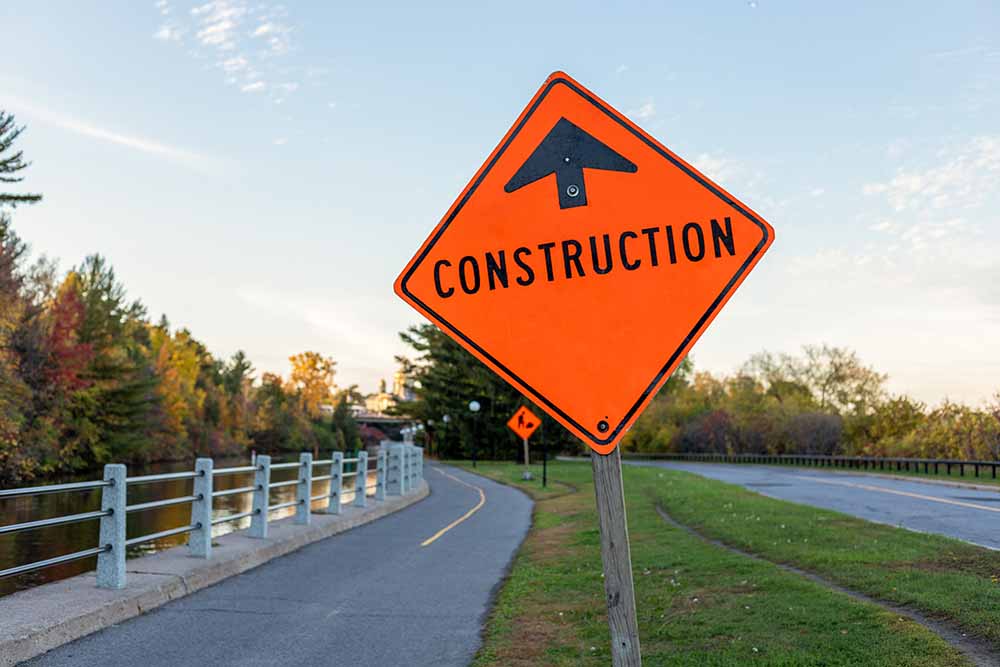
It’s important for every good driver to stay alert and stay safe on the roads, and that means understanding and adhering to the various road and safety signs that are in place to keep both pedestrians and drivers safe.
If you’re a new driver, or new to living in Ontario, you might be wondering about what the different street signs mean. You’ll encounter a variety of different types of signs on the road, including traffic signs, which give you information about traffic laws and dangerous driving conditions. You’ll also encounter regulatory signs, which are signs that give directions for how the roadway is to be used. These signs usually have a white background.
Finally, you may also encounter warning signs, which indicate unusual conditions ahead. You can recognize warning signs because they are diamond-shaped and have a yellow background.
The Government of Ontario employs dozens of signs to communicate to drivers what they should and should not do. Here are some of the most common signs and their meanings:
Stop sign Yield sign School zone signs Parking signs Road work signs Speed limit signs
Stop sign
Probably the most iconic and easily recognizable street sign, the eight-sided sign can be found in many places across the globe. When you see this sign, it means you must bring your car to a complete stop. If there is a white stop line on the pavement, that is where you should stop. Likewise, if there is a crosswalk, stop before the crosswalk. Wait until the way is clear before proceeding into the intersection.
Yield sign
A yield sign is a white upside down triangle with a thick red border. A yield sign indicates that you have to slow, or stop and let any oncoming traffic go first. You can expect to find yield signs at intersections, on ramps to highways, and traffic circles.
School zone signs
School zone signs are meant to protect pedestrians and young children. These signs are usually yellow, have five sides, and features two black figures. School zones requires you to drive more slowly than a standard city speed and to proceed with caution, as it’s likely that there are small children in the area.
Parking signs
Parking signs are regulatory, and do tell you how to behave in traffic. Instead, they tell you how to use the road. Parking signs usually indicate whether parking is allowed or not. If marking is not allowed, there is usually a red circle with a diagonal line over a black “P.” If parking is allowed, you’ll usually see a green circle around a black “P.”
Parking signs might also indicate the times the times or days in which parking is or is not allowed. These days and times are usually found under the black “P.”
Road work signs
Road work is an ever-present aspect of living in Canada - our harsh winter require roads and highways to be continuously repaired. A series of signs that you’ll find around road work are construction signs. These signs are distinguishable by their by their bright orange colour and diamond shape.
Road work signs are usually temporary and may be put up, taken down, or moved by the construction crew daily. That means if you see a sign in a certain spot one day, don’t expect it to be there, or for conditions to be the same from day to day. Any time you are approaching a construction zone, it’s important to slow down and proceed with caution.
Speed limit signs
Another regulatory sign is a speed limit sign. You’ll find these signs on all types of roads, from highways, to surface streets to rural areas. Speed limit signs are usually rectangular and white. They will typically have the speed limit displayed in large black numbers. Speed limits are meant to be respected, and travelling above the speed limit can result in a fine or worse.
There are many different types of street signs in Ontario, each with unique meanings and essential information to convey. If you aren’t sure what some street signs mean, there is a complete list on the Government of Ontario website. If you see a sign you don’t understand, slow down and proceed cautiously.
Jordann Kaye is a freelance writer with over ten years of experience writing about insurance, homeownership, credit cards and more. She has been featured in many publications including The Globe and Mail, the Toronto Star, and CBC News.